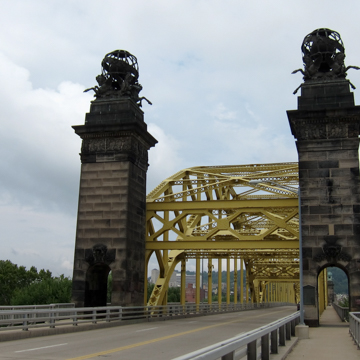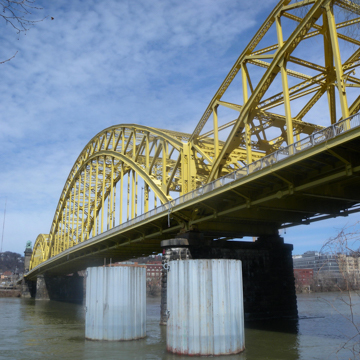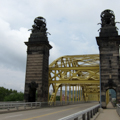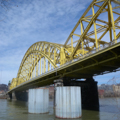You are here
Sixteenth Street Bridge
Like the “Three Sisters” bridges (AL13), the design of this span was overseen by Pittsburgh's Civic Arts Commission, which demanded a monumental aspect to what was the third bridge on this site. The New York architects had recently completed New York's Grand Central Terminal, and here, too, they employed oversized sculptures—in this case, giant bronze horses and globes by Leo Lentelli—to render the bridge a true civic monument. Two steel side arches flank a 437-foot center span, creating what has been described by bridge historian Steven Fenves as “an indeterminate hybrid, part trussed arch and part full-depth truss.” The abutments consist of high stone piers carrying Lentelli's horses and globes.
Writing Credits
If SAH Archipedia has been useful to you, please consider supporting it.
SAH Archipedia tells the story of the United States through its buildings, landscapes, and cities. This freely available resource empowers the public with authoritative knowledge that deepens their understanding and appreciation of the built environment. But the Society of Architectural Historians, which created SAH Archipedia with University of Virginia Press, needs your support to maintain the high-caliber research, writing, photography, cartography, editing, design, and programming that make SAH Archipedia a trusted online resource available to all who value the history of place, heritage tourism, and learning.





